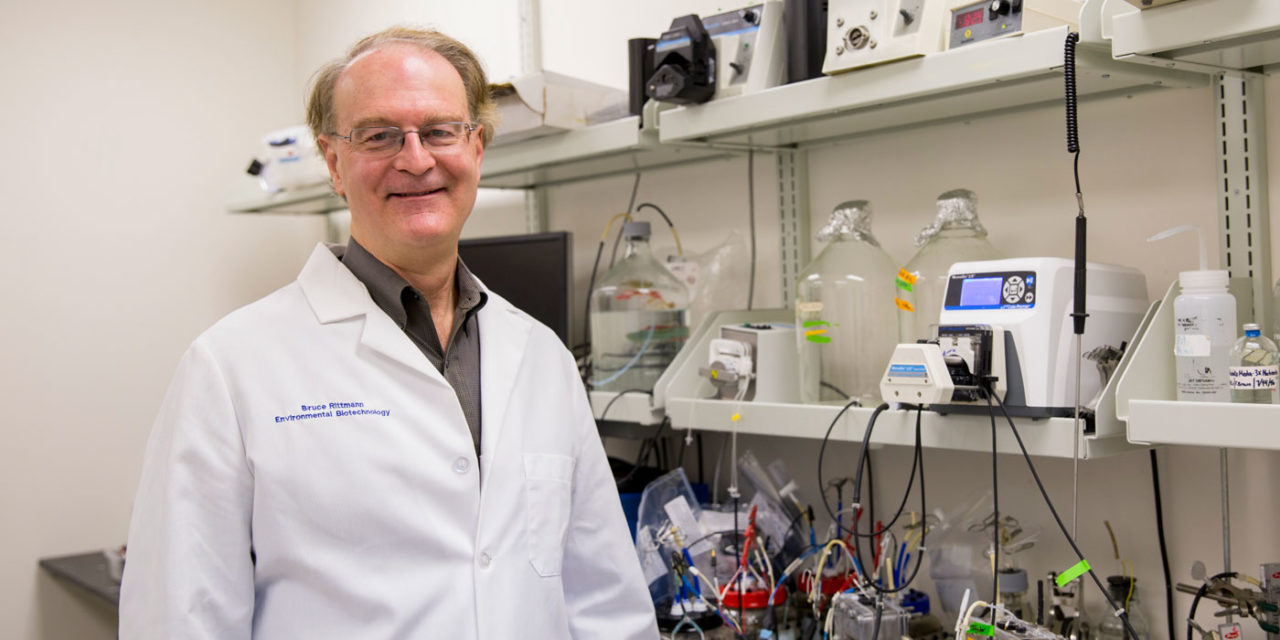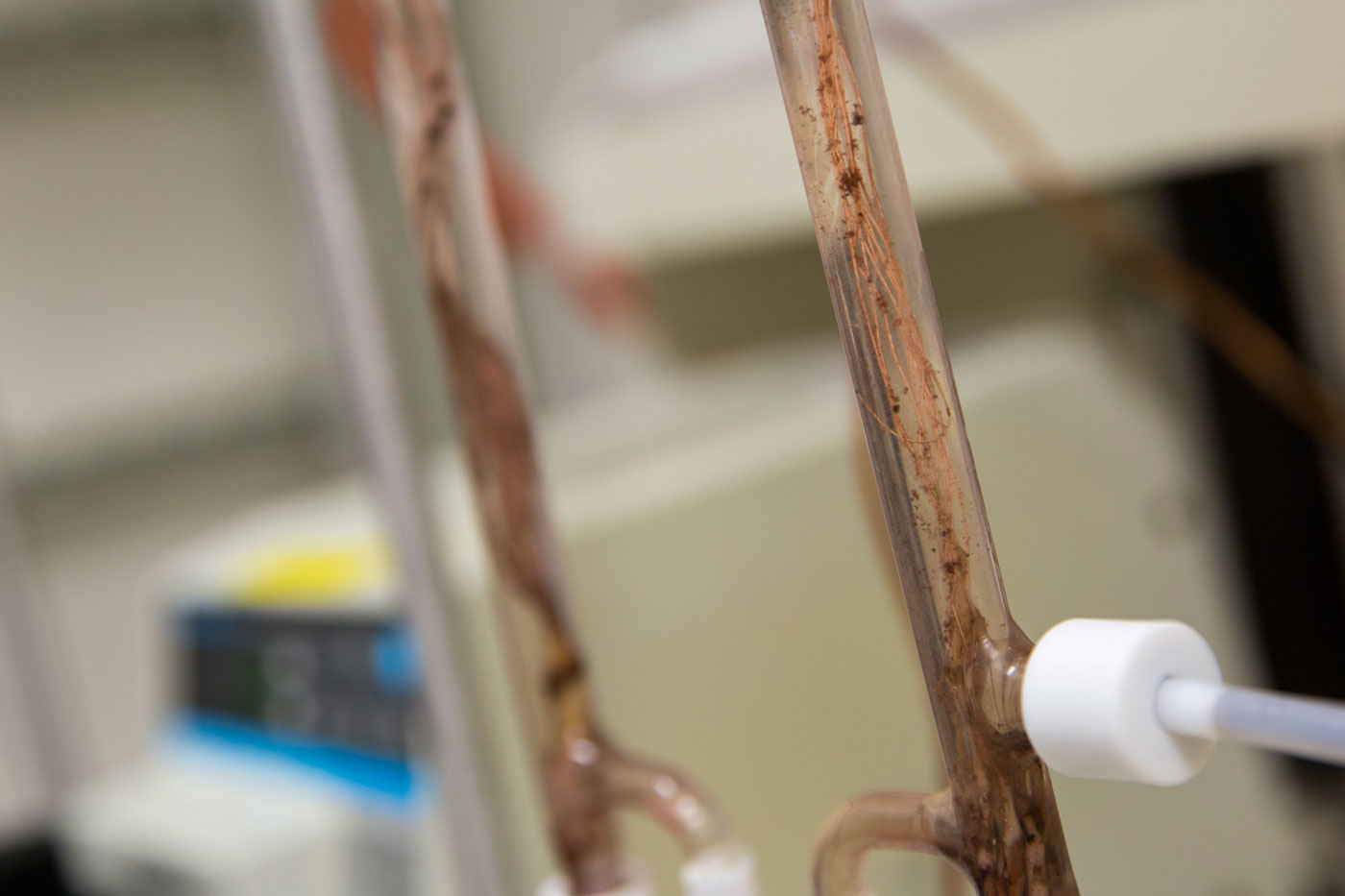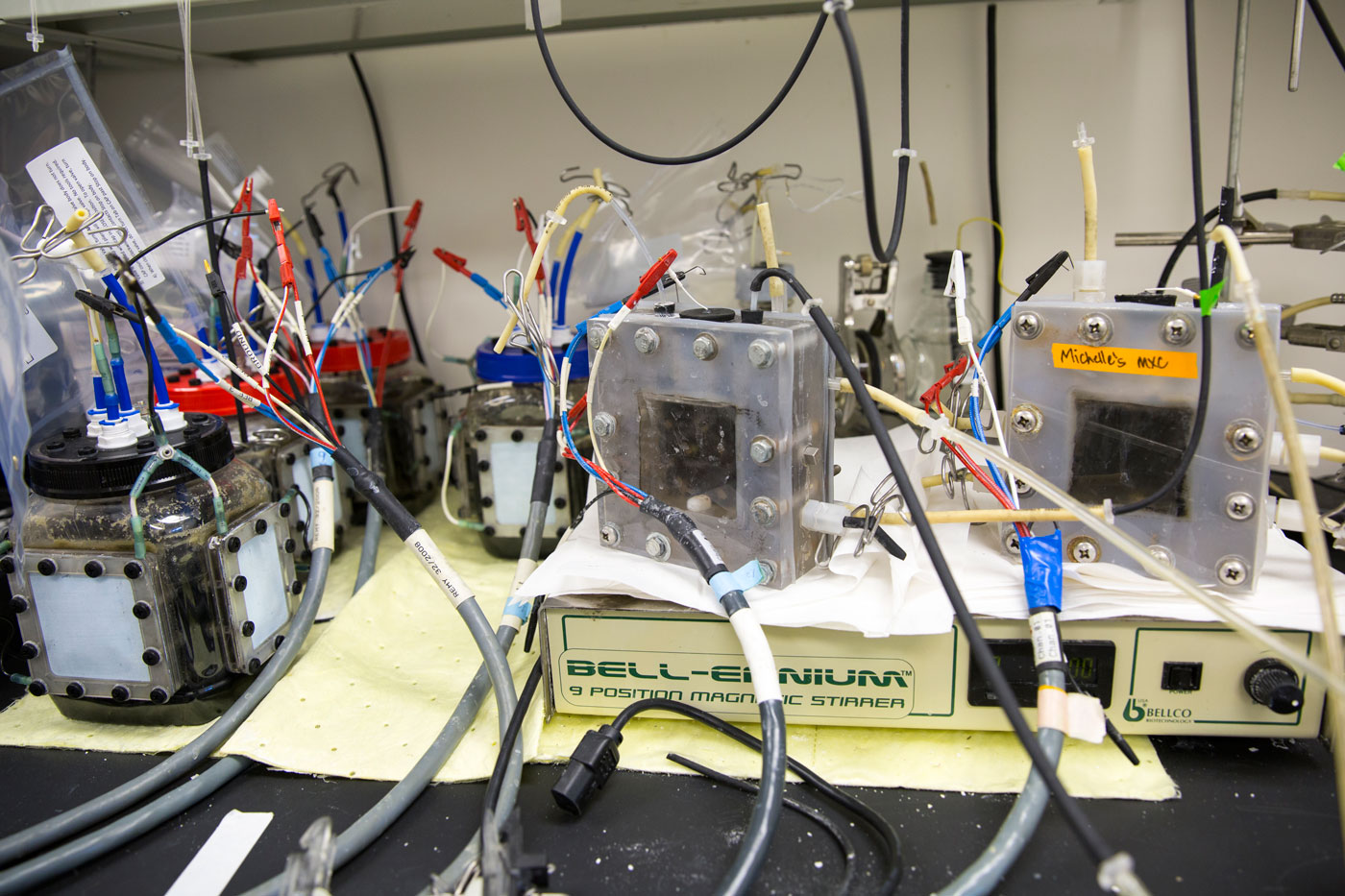
Inventions that clean up water earn Rittmann NAI Fellowship

What makes a successful invention? There are many criteria, but often our most widely used inventions solve multiple problems. WD-40 and duct tape both boast hundreds of uses or more, and likely we all have both at hand.
Another example involves making natural processes do a variety of work for us, such as using bacteria to clean up contaminants in wastewater. But Arizona State University Regents’ Professor Bruce Rittmann took his discovery of this process a step further and figured out how to create fuel and other valuable substances in the process.
This innovative and practical approach to the world’s waste problem helped earn Rittmann the honor of being named a National Academy of Inventors Fellow.
NAI Fellowship is the highest professional distinction awarded to academic inventors. To be selected, nominees must hold U.S. patents that make a tangible impact on “quality of life, economic development and welfare of society.”
This is a unique and prestigious honor, showing how Rittmann’s ideas and inventions have gained traction beyond ASU’s Ira A. Fulton Schools of Engineering and Biodesign Institute.
“Professors typically get honors that relate to their publications and students. Getting patents and moving technologies to commercialization are signs that one’s ideas are getting beyond the ivory tower of academia,” Rittmann says. “Inventing helps me be part of a new and important culture.”
Honor made possible by colleagues
NAI Fellows are nominated by their peers for outstanding, innovative contributions in patents and licensing, technology, impact on society and enhancing innovation.
A committee of 19 NAI members elected this year’s class of Fellows from these nominations.
Those at ASU who contributed to Rittmann’s election are Charles Arntzen, Regents’ Professor and co-director of the Biodesign Center for Infectious Diseases and Vaccinology; Sethuraman Panchanathan, executive vice president of Knowledge Enterprise Development and chief research and innovation officer at ASU; and Elizabeth “Betsy” Cantwell, vice president of research development at ASU.
Cantwell praised Rittmann’s role as a model others should strive to emulate.
“As a Regents’ Professor and senior sustainability scientist, Dr. Rittmann’s leadership in interdisciplinary research and education continues to serve as a model for researchers at ASU and worldwide,” Cantwell says.
Panchanathan noted Rittmann’s success and influence on solving important issues.
“Through his research on the management of microbial communities, Dr. Rittmann is transforming the way in which scientists approach water and wastewater treatment, renewable bioenergy, and human health,” Panchanathan says. “The election of Dr. Rittmann as an NAI Fellow is a testament to the impact his work is making on addressing some of the biggest challenges that we face today.”
Rittmann is the third Fulton Schools faculty member to be named an NAI Fellow after Panchanathan and electrical engineering Professor Michael Kozicki.
Transforming waste into valuable substances with bacteria
Rittmann is an international leader in utilizing bacteria and microbes to solve problems involving water, waste and energy. He holds 15 patents related to his work.
He says his greatest patenting achievements involve the Membrane Biofilm Reactor, a commercialized technology used for water decontamination.

Rittmann’s Membrane Biofilm Reactor is a water decontamination system that uses bacteria to reduce contaminants such as nitrates, perchlorate, selenate, chromate and chlorinated solvents to harmless substances. About half of his 15 patents involve the MBfR system. Photographer: Jessica Hochreiter/ASU
About half of Rittmann’s inventions involve the MBfR, which uses bacteria to reduce oxidized contaminants — for example, nitrate from agricultural fertilizer and sewage, perchlorate from jet fuel, selenate from coal, chromate from metals industries, and chlorinated solvents from the semiconductor industry — to harmless substances.
In this process, bacteria are given hydrogen gas diffused through hollow-fiber membranes to biofilms that grow attached to the outside of the fiber walls.
“It is a very simple and robust system, and it works for all oxidized contaminants,” Rittmann says. “It is used to treat contaminated groundwater, wastewater and surface water, and this makes the water safe for human, agricultural or environmental use.”
Rittmann is proud of this achievement because it has been moved to commercial scale, it can be used for large array of oxidized contaminants, and he’s developing many new applications for it in his lab.
He is particularly excited about his continuing work on using the MBfR to create valuable products out water contaminants.
“For example, selenate (a pollutant coming from all operations involving coal) can be reduced in the MBfR to elemental selenium, which is an important industrial feedstock,” Rittmann says. “Another example is palladium, which is a precious metal used as a catalyst, such as in the catalytic converters in automobiles. Mining of palladium and industrial uses result in wastes laden with oxidized palladium, and the MBfR can reduce that palladium to elemental palladium nanoparticles that are useful as catalysts.”
He also holds patents for the development of microbial electrochemical cells, in which organic waste in wastewater is processed by bacteria through electron transfer with a fuel cell to either decontaminate the water or produce electrical power, hydrogen gas or hydrogen peroxide, a process that depends on where the electrons are transferred. The patents Rittmann holds involve features that make the electrochemical cells more efficient.

Microbial electrochemical cells use bacteria to process organic waste in wastewater to either decontaminate the water or produce electrical power, hydrogen gas or hydrogen peroxide. Rittmann’s patents in this technology involve features to make the electrochemical cells more efficient. Photographer: Jessica Hochreiter/ASU
“Microbial electrochemical cells provide two social benefits: removing organic pollutants via the anode reaction and producing a valuable output via the cathode reaction,” Rittmann says.
His innovations also extend to industrial wastewater through a patent on intimately coupled photobiocatalysis (ICPB), which solves the difficult problem of detoxifying wastewater that contains nonbiodegradable organic pollutants such as pesticides, pharmaceuticals and dyes.
“Photocatalysis slightly transforms the chemicals so that they become biodegradable, and bacteria are present to biodegrade them immediately,” Rittmann explains. “The clever thing about ICPB is that photocatalysis often is used to kill bacteria, but we protect our bacteria so that they can function alongside photocatalysis.”
Rittmann joins the ranks of innovative and prominent academics
The new class of NAI Fellows will be inducted and presented with a special trophy, medal and rosette pin on April 6, 2017 as part of the Sixth Annual Conference of the National Academy of Inventors at the John F. Kennedy Presidential Library & Museum in Boston, Massachusetts.
In 2016, the NAI named 175 new Fellows who have a combined total of 5,437 U.S. patents issued. The NAI has a total of 757 Fellows, representing 229 research universities and governmental and nonprofit research institutes. Combined, members hold more than 26,000 U.S. patents.
Many NAI Fellows hold other prominent honors and distinctions, including 94 presidents and senior leaders of research universities and nonprofit research institutes, 376 members of the National Academies of Sciences, Engineering and Medicine; 28 inductees of the National Inventors Hall of Fame; 45 recipients of the U.S. National Medal of Technology and Innovation and U.S. National Medal of Science; 28 Nobel Laureates; 216 AAAS Fellows, 126 IEEE Fellows and 116 Fellows of American Academy of Arts & Sciences.
Rittmann is also a member of the U.S. National Academy of Engineering, a Distinguished Member of the American Society of Civil Engineers, and a Fellow of the American Association for the Advancement of Sciences, the International Water Association, and the Water Environment Federation.



































